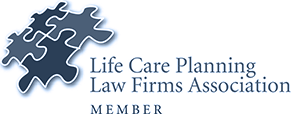Below are figures for 2019 that are frequently used in the elder law practice or are of interest to clients.

Medicaid Spousal Impoverishment Figures for 2019
The new minimum community spouse resource allowance (CSRA) is $25,284 and the maximum CSRA is $126,420. The maximum monthly maintenance needs allowance is $3,160.50. The minimum monthly maintenance needs allowance remains $2,057.50 ($2,572.50 for Alaska and $2,366.25 for Hawaii) until July 1, 2019.
Medicaid Home Equity Limits
Minimum: $585,000
Maximum: $878,000
For CMS’s complete chart of the 2019 SSI and Spousal Impoverishment Standards, click here.
Income Cap
The income cap for 2019 applicable in “income cap” states is $2,313 a month.
Gift and estate tax figures
Federal estate tax exemption: $11.4 million for individuals, $22.8 million for married couples
Lifetime tax exclusion for gifts: $11.4 million
Generation-skipping transfer tax exemption: $11.4 million
Annual gift tax exclusion: $15,000 (unchanged)
Long-Term Care Premium Deductibility Limits for 2019
The Internal Revenue Service has announced the 2019 limitations on the deductibility of long-term care insurance premiums from income. Any premium amounts above these limits are not considered to be a medical expense.
Attained age before the close of the taxable year
Maximum deduction
40 or less
$420
More than 40 but not more than 50
$790
More than 50 but not more than 60
$1,580
More than 60 but not more than 70
$4,220
More than 70
$5,270
Benefits from per diem or indemnity policies, which pay a predetermined amount each day, are not included in income except amounts that exceed the beneficiary’s total qualified long-term care expenses or $370 per day (for 2019), whichever is greater.
For these and other inflation adjustments from the IRS, click here.
Medicare Premiums, Deductibles and Copayments for 2019
Part B premium: $135.50/month (was $134)
Part B deductible: $185 (was $183)
Part A deductible: $1,364 (was $1,340)
Co-payment for hospital stay days 61-90: $341/day (was $335)
Co-payment for hospital stay days 91 and beyond: $682/day (was $670)
Skilled nursing facility co-payment, days 21-100: $170.50/day (was $167.50)
Part B premiums for higher-income beneficiaries:
Individuals with annual incomes between $85,000 and $107,000 and married couples with annual incomes between $170,000 and $214,000 will pay a monthly premium of $189.60.
Individuals with annual incomes between $107,000 and $133,500 and married couples with annual incomes between $214,000 and $267,000 will pay a monthly premium of $270.90.
Individuals with annual incomes between $133,500 and $160,000 and married couples with annual incomes between $267,000 and $320,000 will pay a monthly premium of $352.20.
Individuals with annual incomes between above $160,000 and married couples with annual incomes above $320,000 will pay a monthly premium of $433.40.
Individuals with annual incomes above $500,000 and married couples with annual incomes above $750,000 will pay a monthly premium of $460.50
High-earner premiums differ for beneficiaries who are married but file a separate tax return from their spouse. Those with incomes greater than $85,000 and less than $415,000 will pay a monthly premium of $433.40. Those with incomes greater than $415,000 will pay a monthly premium of $460.50.
For Medicare’s “Medicare 2019 costs at a glance,” click here.
Social Security Benefits for 2019
The new monthly federal Supplemental Security Income (SSI) payment standard is $771 for an individual and $1,157 for a couple.
Estimated average monthly Social Security retirement payment: $1,461 a month for individuals and $2,448 for couples
Maximum amount of earnings subject to Social Security taxation: $132,900 (was $128,400)
For a complete list of the 2019 Social Security figures, go to: https://www.ssa.gov/news/press/factsheets/colafacts2019.pdf





















0 comments